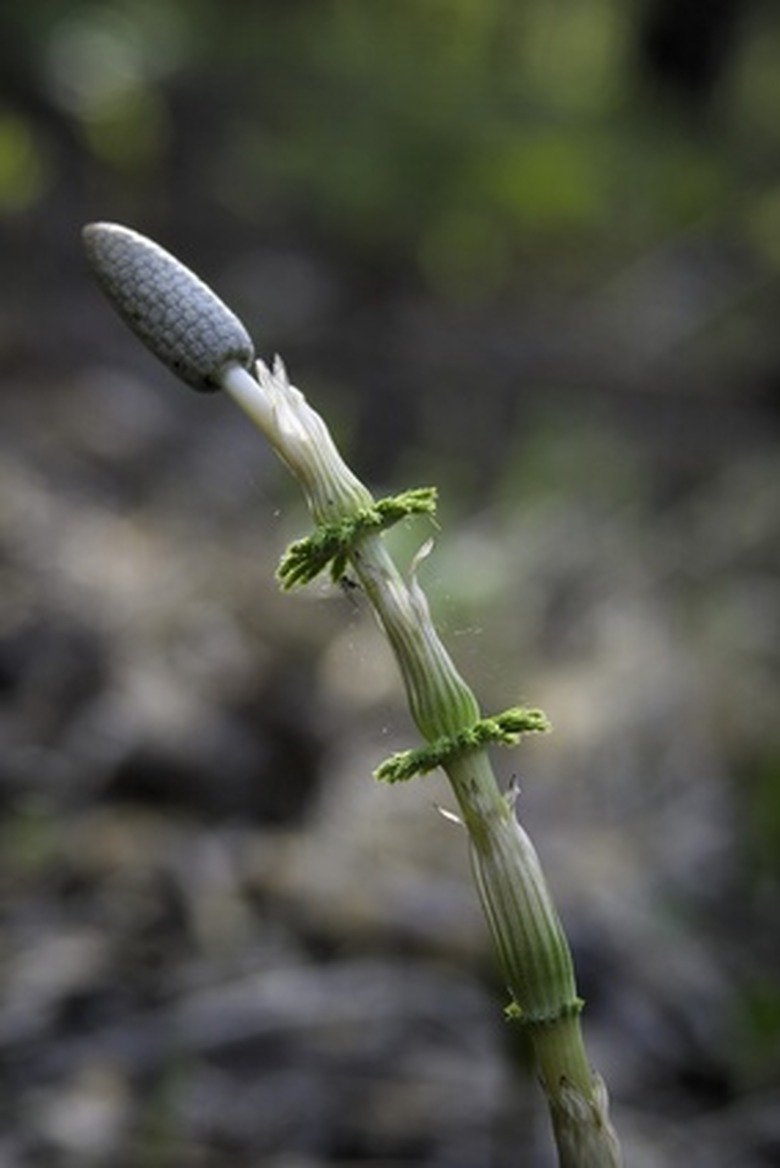How To Kill Horsetail
Horsetails (also known as Equisetum) are one of the most tenacious weeds a gardener can face. Their root systems spread many feet down and to the side and, when they are cut down, the plant often responds by spreading out and sprouting somewhere else nearby. Horsetail plants are also resistant to weed killers, which means there is no easy way to address them, chemical or otherwise. If you want to eliminate your Equisetum plant plague, you will have to approach the problem with patience and diligence.
The Gradual Approach
Step 1
Run a cultivator over the area infested by horsetail at the beginning of the growing season. This will tear up the underground roots, damaging the horsetails.
Step 2
Cut down horsetail plants every time they reach about 3 inches tall all season. This will gradually exhaust the remaining energy of the horse tail root system.
- Horsetails (also known as Equisetum) are one of the most tenacious weeds a gardener can face.
- Their root systems spread many feet down and to the side and, when they are cut down, the plant often responds by spreading out and sprouting somewhere else nearby.
Step 3
Cultivate the soil again at the end of the season. Depending on the tenacity of your remaining Equisetum plants, you may have to repeat this up to 3 years in a row to kill all the horsetails. If there are nearby horsetail colonies, they may continue to spread into the area year after year.
The Scorched Earth Approach
Step 1
Transplant any valuable plants out of the area by carefully digging them up, cleaning their roots and potting them in fresh soil.
Step 2
Pour 10 percent concentrated vinegar (acetic acid) on the bottom of your horsetails and the soil around them.
Step 3
Wait for one week. The vinegar will make the soil too acidic to sustain plant life, killing off the horsetail plants completely within a few days.
- Cultivate the soil again at the end of the season.
- Depending on the tenacity of your remaining Equisetum plants, you may have to repeat this up to 3 years in a row to kill all the horsetails.
Step 4
Apply agricultural lime to the vinegar-treated soil as recommended on the packaging. Water the soil to help the lime soak in.
Step 5
Dig up and remove the roots of the Equisetum plant. Add a layer of compost on top of the soil. You are now ready to plant new plants in a horsetail plant free environment.
Warning
Exercise caution when using vinegar. Acetic acid in concentrations of 10 percent can be extremely irritating to skin and eyes and higher concentrations can be caustic.
Things Needed
- Cultivator
- Gardening sheers
- Soil
- Pot
- Shovel
- 10 percent concentrated vinegar
- Agricultural lime
- Water
- Mulch
